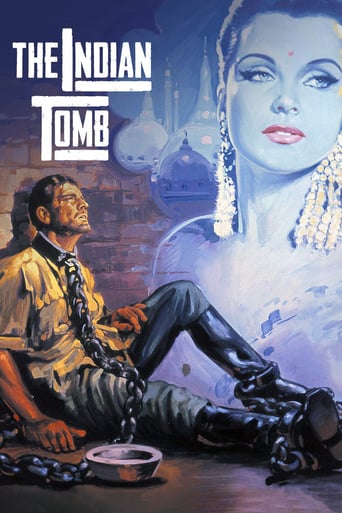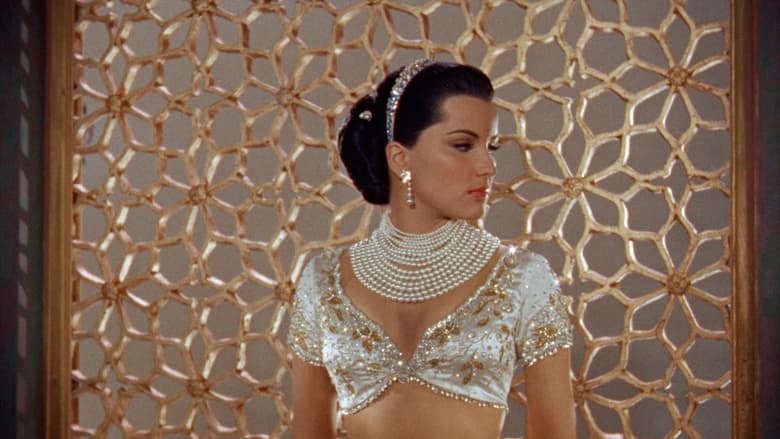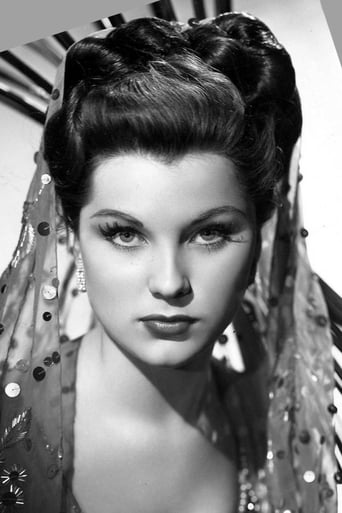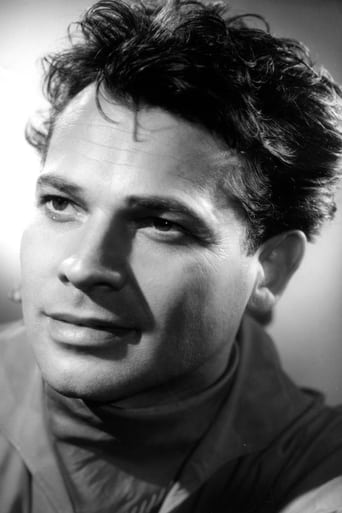

The Indian Tomb (1959)
Seetha and Harold Berger are rescued from the desert by a caravan and brought to a small village. However, the greedy owner of the house where they are lodged betrays the law of hospitality and reveals their location to Prince Ramigani. The couple tries to escape but is hunted and captured by Ramigani and his men. Meanwhile Irene Rhode and her husband Walter Rhode suspect that Maharaja Chandra is not telling the truth about Harold's destiny. The conspirator Ramigani forces Seetha to accept to get married with Chandra to provoke the wrath of the priests and get the alliance of Prince Padhu and his army. In the meantime, Harold succeeds in escaping from the dungeon and seeks out Seetha to save her.
Watch Trailer
Cast


Reviews
This is the continuation of the story begun in "Der Tiger von Eschnapur". This previous film ended with the lovers seemingly on death's door--dying out in the desert after running away from the vengeful Maharaja. Now, shortly after, the pair are recaptured. The beautiful dancer (Debra Paget) is being forced to marry the nasty Maharaja and her lover (Paul Hubschmid) is being held in a dungeon--but she's been told he's dead. In the meantime, the nice engineer's sister and brother-in-law are virtual prisoners of the Maharaja's kindness and they soon realize the man knows more about Hubschmid than he's admitting. And, during all this, there are MANY folks conspiring to depose the Maharaja.The first film was escapist fun. This second one is dreary and slow during too much of the film. Part of it is that it's so talky. Part of it is the best part of the first film was the love story--but Paget and Hubschmid are separated almost this entire film and spend almost no time together. And, part of it is that the script is rather bereft of action--at least until the end of the film. And, when the fighting broke out, it often seemed like it was being performed in slow-motion. Finally, the Maharaja's change of heart at the end made no sense. Where did this come from considering it completely violated who he'd become in the film. The only really good thin about the film is Paget's sexy dancing--which manages to perhaps be even more alluring than it was in the first film! Wow. But otherwise, a rather limp follow-up--and one that should have been fun.By the way, I just about always watch films in their original language with subtitles. On a lark, I decided to leave the English language version on for a few minutes--just to see if they were different. Oddly, the leading man plays a Canadian in the English language version and he's a German in the original film! Perhaps with WWII only a decade and a half back, they thought the film would be more marketable outside Germany if the man was a Canadian. I noticed a few other differences and turned it back to the German language version.
Please see also my review of The Tiger of Eschnapur.The Indian Tomb was the second part of a pair of pictures directed by Fritz Lang, his first German productions since the 1930s, adapted from a screenplay he had himself worked on nearly thirty years earlier. The two of them should really be considered one whole work as much as were his two-part epics from the silent era, Dr Mabuse: Der Spieler (1922) and Die Nibelungen (1924). These earlier opuses were among the most prestigious works made, not only in Germany but anywhere in the world at the time. However this Indian diptych of the late-50s, a product of the drastically different post-war German film industry, looks like some cheap and cheerful Euro B-flick, at least at first glance.The Indian Tomb and its forerunner The Tiger of Eschnapur certainly bear many hallmarks of a trashy proto-exploitation feature. The Indian characters are played rather unconvincingly by Europeans in "brownface", the special effects are often laughable (stuffed tigers in part one, which are outdone by plastic cobras in part two), a bit of partial female nudity, and a fast-paced plot of action and romance with more than of a few plot holes, imagination-stretchers, and complete suspensions of logic – the most stupendous of which has to be the unexplained concept that lepers are actually zombies. To make matters worse, the two pictures were cut down into one movie by American International Pictures, Roger Corman's distributor, and for years this was all English-speaking audiences could see of them. Today however we are lucky enough to have fully-restored versions of both parts available to us, including a subtitled German version, which is far preferable to the atrocious English dub, assuming you can get over the illogic of Indians speaking to each other in German. Now at last we are able to rediscover and re-evaluate Fritz Lang's final masterpiece.On closer inspection, these two pictures are not quite so low in their values and appeal as one might think. For a start, the fact that Europeans play Indians is not really so different to westerners playing Arabs in Lawrence of Arabia. And there would be female nudity in Blow-up, and that is considered arty! The cast, while not exactly award-worthy, are uniformly decent, with the standout being Walter Reyer's eerily underplayed portrayal of the unbalanced Maharajah. There's a fabulous musical score by Gerhard Becker, and although admittedly the invented "Uncle Pat" song sounds more like a Gregorian chant than a Irish folk ballad, when Becker interpolates it into the main score on sweeping strings it makes a wonderful, aching love theme. The plot too is more than just your typical fight-a-minute no-brainer. While far from realistic its rip-roaring adventure has many strands to it, such as the political infighting of the fictional eastern province and the Maharajah's descent into jealousy-fuelled madness. It is of course aspects like this that would have been ripe for the chop when the pictures were re-edited in the US.And now let us turn to the contribution of Herr Lang himself. Although he spent most of his twenty years in Hollywood making cheap and sometimes nasty B-flicks, he never lost the flair and professionalism of his early German career, at which time he was rightly regarded as one of the most important talents at UFA studios. He was always at his best presenting adventure stories tinged with a slightly dark, paranoid streak which, while unfortunately being the subject of auterist psychobabble, mainly serves to heighten the sense of danger and excitement. As in The Tiger of Eschnapur the vast, angular sets are given prominence, with shots composed so that the walls seem to press in on all sides. There's often a passage or open door at the back of the room, suggesting that the heroes could be crept up upon from behind at any moment. Early on there's a shot where Walter and Irene are in their quarters, and a net curtain covers one corner of the frame. By cinematic convention this looks like a point-of-view shot, which gives this unnerving feeling that the couple are being watched. The carefully orchestrated action finale, in which all the various elements – the rebellion, Harald's escape, the flooding of the catacombs – reach a crescendo is reminiscent of the climactic scenes of Metropolis and Die Nibelungen. It is really such a good thing that Lang, the man who brought our dreams and our nightmares to the screen with such vibrancy, did not end his career in lower-end Hollywood productions. His Indian epic is a glorious and worthy tribute to his silent-era heyday.
Avoid "Indian Tomb" unless you're ten or younger. This corny adventure film, although colorfully filmed on location in India, never rises to the occasion. The characters are all one-dimensional, especially the "hero" of the film. His role has barely any dialog and his action scenes are weak and unconvincing. The female lead is beautiful but looks about as "Indian" as Michelle Pfeiffer. The main Indian characters are mostly white actors in make-up! Their long, talky scenes will tempt you to press "fast-forward". Some parts are done well, such as the snake-dance and the leper cave, but they don't make up for long stretches of cardboard performances. The dialog the actors speak comes from a seventh-rate comic book. The head-priest character has a ridiculously dubbed voice. Though directed in 1959 by the usually great Fritz Lang, it more resembles a simplistic, lesser adventure serial from the 1930s. Lang bombed if he thought he was producing a work for mature audiences. I was very disappointed in this film. Suitable viewing for children and Fritz Lang completists only.
I just watched this on DVD--I wasn't aware of two important factors when I did. One, that this was a remake of a 1938 film, and two that it was actually the last part of a typical Lang epic-length film! I wonder how both films were ever condensed into a mere ninety minutes for domestic release? What an extraordinary feat in itself! I can see the influence on Speilburg and Luca quite clearly. This does have numerous external similarities to TEMPLE OF DOOM, as well as several motifs common to other Lang films.There are some amusing blunders. The Priest talks about Allah, then a few scenes later, cautions that THE GODS will be displeased. Islam is monothestic!There was a line uttered by the Priest: "There will be darkness over Eschanpur." That would have been a most intriguing title, nothing so bland as THE Indian TOMB, and would have also linked TIGERS OF ESCHANAPUR to this film. Both were released in that one 90 minute Americanized version, JOURNEY TO THE LOST CITY. As far as I could tell from this half, the city was far from "lost"! The Maharajah is proclaimed as RAJ of this state and that, master of the realms of Yadda-Yadda, and so on. I got out my map of India and was easily able to locate the areas he mentioned. I thoroughly enjoyed this film, and recommend it highly, especially to those who love a good rollicking adventure. I intend to secure the rights and bring this to the screen, before all the tigers are extinct.




